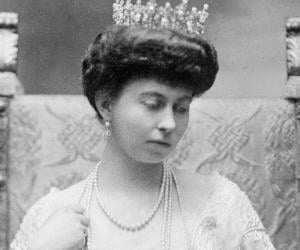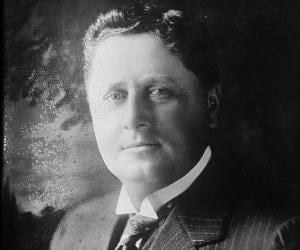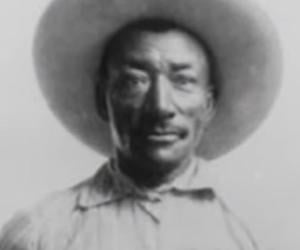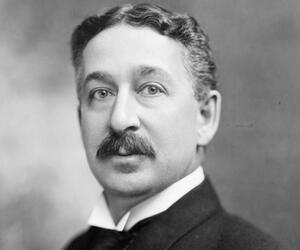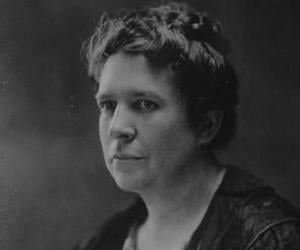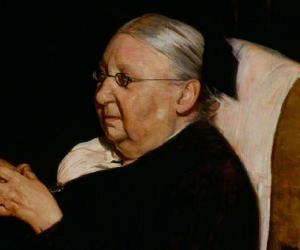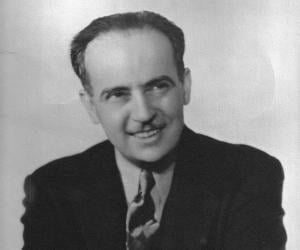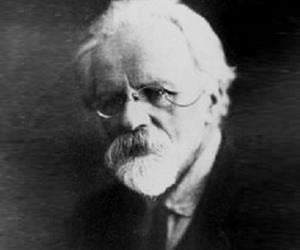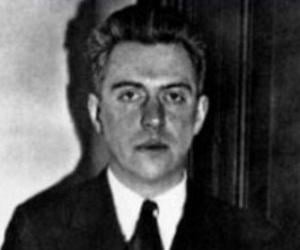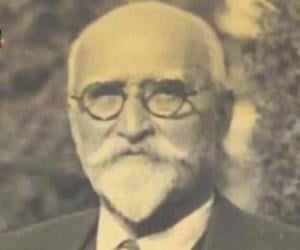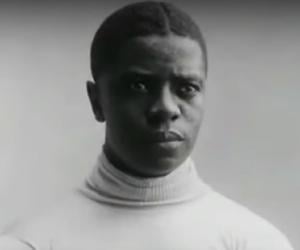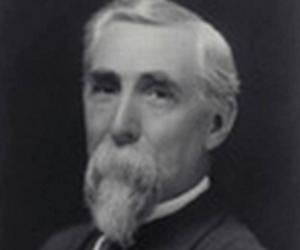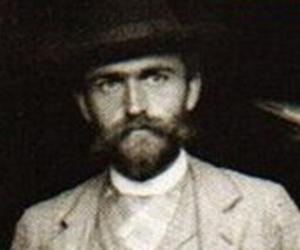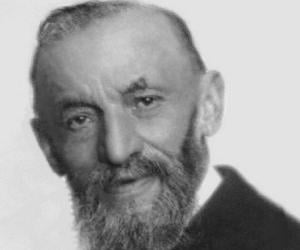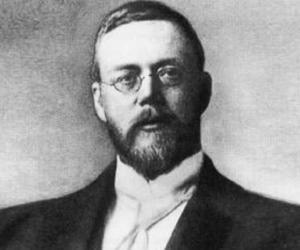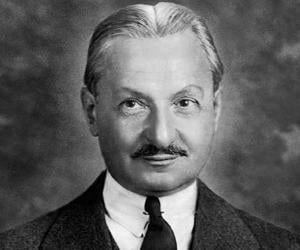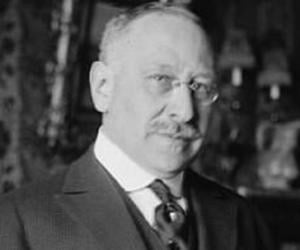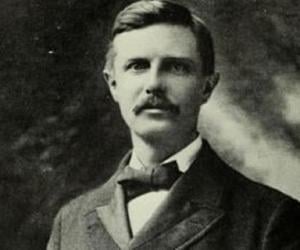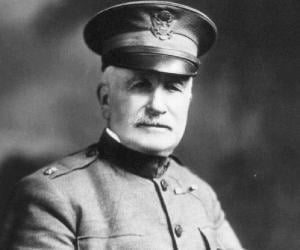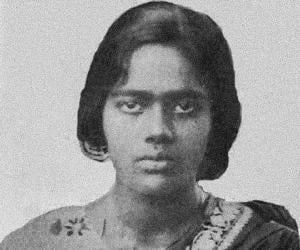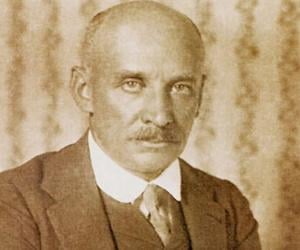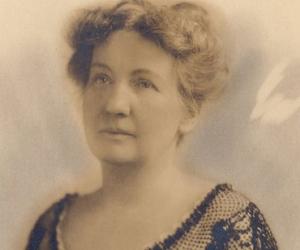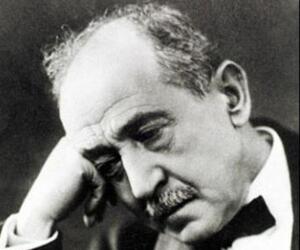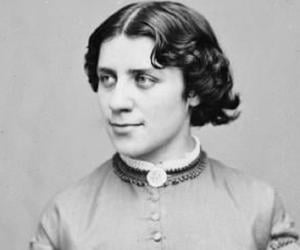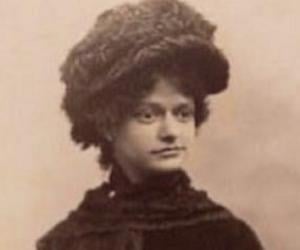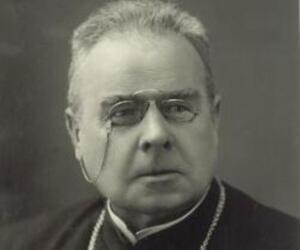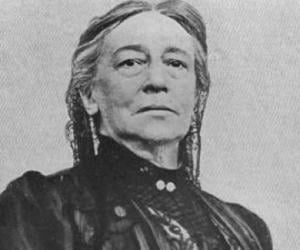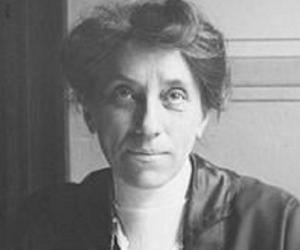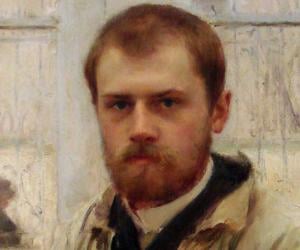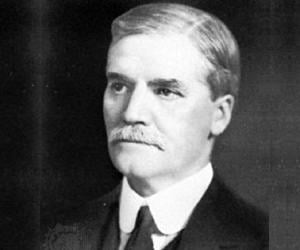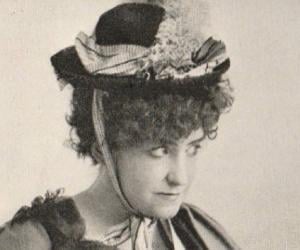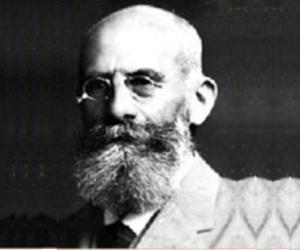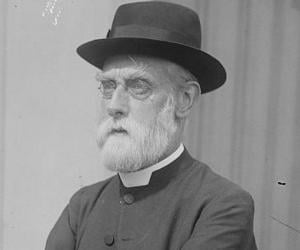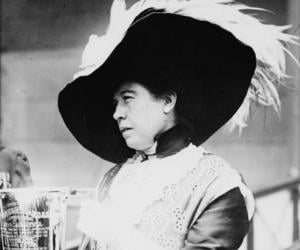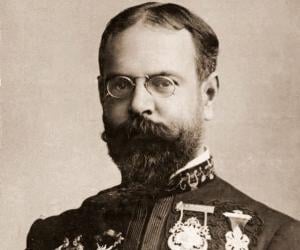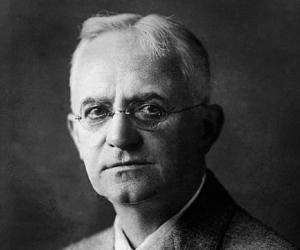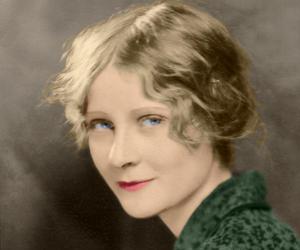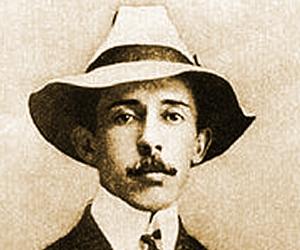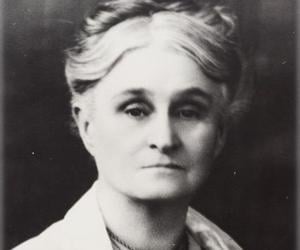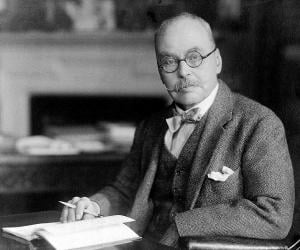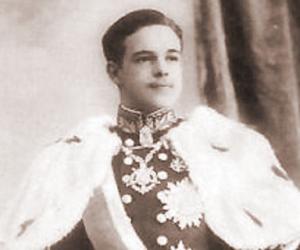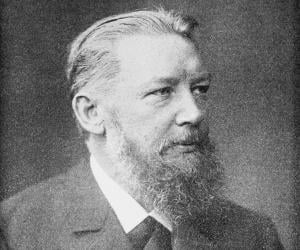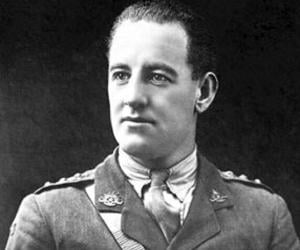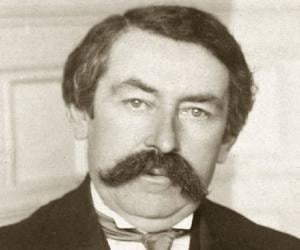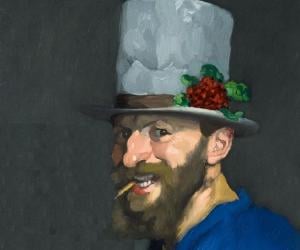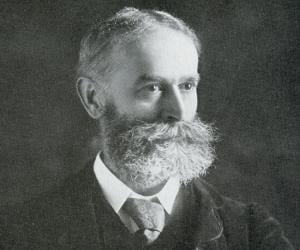Famous People Who Died In 1932
Discover the most famous people died who died in the year 1932. This list includes people like John Philip Sousa, Nadezhda Alliluyeva, George Eastman, Peg Entwistle, Ronald Ross and many more. This list of celebrities is loosely sorted by popularity. People featured on this list, include political leaders, artists, prime ministers and novelists who died in 1932. This list includes people from United States, United Kingdom, Germany & France and many more countries.
Vote for Your Favourite People Who Died In 1932
Right IconThis ranking is based on an algorithm that combines various factors, including the votes of our users and search trends on the internet.
1
Molly Brown(American Socialite, Philanthropist and Actress Who Survived the Sinking of the Titanic)
Birthdate: July 18, 1867
Sun Sign: Cancer
Birthplace: Hannibal, Missouri, United States
Died: October 26
Molly Brown was an American philanthropist and socialite. She is often referred to as the Unsinkable Molly Brown for surviving the 1912 sinking of Titanic and for unsuccessfully encouraging the crew members of Lifeboat No. 6 to look for survivors by returning to the debris field. Her life and work inspired the 1960 musical, The Unsinkable Molly Brown.
Birthdate: November 6, 1854
Sun Sign: Scorpio
Birthplace: Washington, D.C., United States
Died: March 6
Birthdate: July 12, 1854
Sun Sign: Cancer
Birthplace: Waterville
Died: March 14
George Eastman revolutionized the world of photography with his Eastman Kodak Company and the roll film, which also came to be used in movies. Initially a banker, he later devoted himself to his camera company. A dedicated philanthropist, too, he contributed financially to music, dentistry, and medicine.
Birthdate: February 5, 1908
Sun Sign: Aquarius
Birthplace: Port Talbot, Glamorgan, England
Died: September 16
Birthdate: July 20, 1873
Sun Sign: Cancer
Birthplace: Santos Dumont
Died: July 23
Brazilian aviator Alberto Santos Dumont was born to an affluent coffee plantation owner and studied engineering in France. He was the man behind the first public flight in a winged aircraft in Europe. Later, the use of planes in warfare made him so depressed that he committed suicide.
6
Sophia of Prussia
(Princess of Prussia and Former Queen consort of the Hellenes (1913 - 1917))
Birthdate: June 14, 1870
Sun Sign: Gemini
Birthplace: New Palace, Potsdam, Germany
Died: January 13
The daughter of German emperor Frederick III, Princess Sophia of Prussia was also one of the granddaughters of Queen Victoria through her mother. She later became the queen consort of the Hellenes by her marriage to King Constantine I of Greece. Following the National Schism, she spent her life in exile.
7
William Wrigley, Jr.
(Industrialist)
Birthdate: September 30, 1861
Sun Sign: Libra
Birthplace: Philadelphia, Pennsylvania, United States
Died: January 26
Birthdate: August 2, 1861
Sun Sign: Leo
Birthplace: Geraldton, Australia
Died: June 9
Edith Cowan was an Australian social reformer best remembered for serving as a member of parliament; she was the first Australian woman to do so. She is also remembered for working for the welfare and rights of children and women. In recognition of her contribution, Cowan has been depicted on Australia's fifty-dollar note since 1995.
Birthdate: May 13, 1857
Sun Sign: Taurus
Birthplace: Almora, India
Died: September 16
Nobel Prize-winning British doctor Ronald Ross is best remembered for his pathbreaking work on malaria, which proved that the disease was caused by the Anopheles variant of mosquitoes. After his extensive research in India, he went back to London, where he was knighted. He also wrote poetry and songs.
Birthdate: December 5, 1870
Sun Sign: Sagittarius
Birthplace: Williamson County, Texas, United States
Died: April 2
Birthdate: November 15, 1889
Sun Sign: Scorpio
Birthplace: Lisbon, Portugal
Died: July 2
Son of King Carlos I, Manuel II, was the last king of Portugal. While he came to power after his father’s assassination, he had to flee to England after the Portuguese monarchy was dissolved by a revolution. He later devoted himself to books and published Early Portuguese Books.
12
Edgar Wallace
(Multi-genre writer who is most famous for King Kong and the J. G. Reeder detective series)
Birthdate: April 1, 1875
Sun Sign: Aries
Birthplace: Greenwich, Kent, England, united Kingdom
Died: February 10
13
King Camp Gillette
(Businessman)
Birthdate: January 5, 1855
Sun Sign: Capricorn
Birthplace: Fond du Lac, Wisconsin, United States
Died: July 9
14
Florence Kelley
(American Social and Political Reformer and the Pioneer of the Term 'Wage Abolitionism')
Birthdate: September 12, 1859
Sun Sign: Virgo
Birthplace: Philadelphia, Pennsylvania, United States
Died: February 17
Florence Kelley was an American political and social reformer who pioneered the term wage abolitionism. Kelley's work for the minimum wage, children's rights, and eight-hour workdays are widely acclaimed today. After serving as the National Consumers League’s first general secretary, Florence Kelley helped found the National Association for the Advancement of Colored People (NAACP) in 1909.
15
Gertrude Jekyll
(Horticulturist, Painter, Gardener, Non-fiction writer, Botanist, Architect)
Birthdate: November 29, 1843
Sun Sign: Sagittarius
Birthplace: London
Died: December 8
Landscape architect Gertrude Jekyll was born into an affluent family and grew up in a refined environment, learning music and traveling. Initially interested in painting, she gave it up to focus on gardening when she developed eyesight problems. She built around 400 gardens and also collaborated with Sir Edwin Lutyens.
16
Paul Bern
(American Film Director, Screenwriter, and Producer for Metro-Goldwyn-Mayer)
Birthdate: December 3, 1889
Sun Sign: Sagittarius
Birthplace: Wandsbek, Germany
Died: September 5
Filmmaker and producer Paul Bern was the man behind the launch of American sex symbol Jean Harlow. He, unfortunately, died of a gunshot wound only 2 months after his marriage to Bern, which gave rise to numerous theories, one of them being suicide. The handwritten suicide not found was not conclusive.
Birthdate: September 2, 1853
Sun Sign: Virgo
Birthplace: Riga
Died: April 4
Wilhelm Ostwald was a Baltic German philosopher and chemist who is credited with co-founding the field of physical chemistry. A polymath, Ostwald made significant contributions to philosophy, art, and politics, especially after his retirement from academic life. His contributions to the fields of reaction velocities, chemical equilibria, and catalysis earned him the 1909 Nobel Prize in Chemistry.
18
Ilya Ivanovich Ivanov
(Biologist)
Birthdate: August 1, 1870
Sun Sign: Leo
Birthplace: Shchigry
Died: March 20
Birthdate: July 21, 1899
Sun Sign: Cancer
Birthplace: Garrettsville, Ohio, United States
Died: April 27
Birthdate: January 10, 1893
Sun Sign: Capricorn
Birthplace: Winchelsea
Died: January 17
Albert Jacka was the first Australian to be decorated with the Victoria Cross during the First World War. He enlisted in the Australian Imperial Force as a young man and fought in the Gallipoli Campaign during the First World War. He became a businessman after the conclusion of the war but never recovered fully from his wartime injuries.
21
Dorabji Tata
(Key figure in the history and development of the Tata Group)
Birthdate: August 27, 1859
Sun Sign: Virgo
Birthplace: Mumbai, Maharashtra, India
Died: June 3
22
Major Taylor
(One of the Greatest American Sprinters of All Time)
Birthdate: November 26, 1878
Sun Sign: Sagittarius
Birthplace: Indianapolis, Indiana, United States
Died: June 21
Major Taylor was a professional cyclist who set many world records between 1898 and 1899. In 1899, he became the first African American to win the sprint event at the world track championships and only the second black athlete to emerge victorious in a world championship irrespective of the sport.
23
Henry M. Leland
(American Machinist, Inventor, Automotive Entrepreneur and Founder of Automotive Brands ‘Cadillac’ and ‘Lincoln')
Birthdate: February 16, 1843
Sun Sign: Aquarius
Birthplace: Vermont, United States
Died: March 26
While initially working in the machine plants and firearms industries, Henry M. Leland gradually mastered the art of toolmaking and manufacturing. He later revolutionized the auto industry and was the man behind the car brands Cadillac and Lincoln. He introduced inventions such as the electric starter and the V-8 engine.
Birthdate: March 28, 1862
Sun Sign: Aries
Birthplace: Nantes
Died: April 7
Nobel Peace Prize-winning French stateman Aristide Briand had been the prime minister of his country for 11 terms, apart from holding 26 ministerial posts throughout his career. He played major roles in the drafting of the Pact of Locarno and Kellogg-Briand Pact, and had founded journals such as l’Humanité.
25
Karl Blossfeldt
(German Photographer and Sculptor Best Known for His Close-up Photographs of Plants and Living Things)
Birthdate: June 13, 1865
Sun Sign: Gemini
Birthplace: Schielo, Germany
Died: December 9
Karl Blossfeldt was a German photographer, artist, sculptor, and teacher. He is best remembered for his work Urformen der Kunst, a collection of close-up photos of animals and plants. The book became highly influential and Blossfeldt's works were used as teaching tools in Berlin. Blossfeldt also served as a professor at the United State Schools for Fine and Applied Art.
26
Giuseppe Peano
(Italian Mathematician and Glottologist)
Birthdate: August 27, 1858
Sun Sign: Virgo
Birthplace: Cuneo, Italy
Died: April 20
Remembered as the founder of symbolic logic, Giuseppe Peano laid down the symbols of union and intersection of sets. He also worked on geometric calculus and taught at institutes such as the University of Turin. His works are written in a simplified version of Latin. He was knighted by Italy.
27
Reginald Aubrey Fessenden
(Canadian-born American Inventor)
Birthdate: October 6, 1866
Sun Sign: Libra
Birthplace: East Bolton, Canada
Died: July 22
28
Florenz Ziegfeld, Jr.
(Theatrical Producer)
Birthdate: March 21, 1867
Sun Sign: Aries
Birthplace: Chicago, Illinois, United States
Died: July 22
29
Frederick Augustus III of Saxony
(King)
Birthdate: May 25, 1865
Sun Sign: Gemini
Birthplace: Dresden, Germany
Died: February 18
30
Julius Rosenwald
(Businessman)
Birthdate: August 12, 1862
Sun Sign: Leo
Birthplace: Springfield, Illinois, United States
Died: January 6
31
Frederick Jackson Turner
(American Historian During the Early 20th Century)
Birthdate: November 14, 1861
Sun Sign: Scorpio
Birthplace: Portage, Wisconsin, United States
Died: March 14
Frederick Jackson Turner was an American historian who was closely associated with the University of Wisconsin as well as Harvard University. Turner is credited with training and mentoring several PhDs who went on to become respected historians in their own right. Best remembered for his Frontier Thesis, Frederick Jackson Turner had a strong influence on historians, novelists, and filmmakers.
32
William Williams Keen
(American Physician and the First Brain Surgeon in the United States)
Birthdate: January 19, 1837
Sun Sign: Capricorn
Birthplace: Philadelphia, Pennsylvania, United States
Died: June 7
William Williams Keen pioneered brain surgery in the U.S. Working on neurological injuries as an army surgeon, he discovered many previously unknown neurological ailments. He was also part of a secret operation on a yacht to remove a tumor from the upper jaw of U.S. president Grover Cleveland.
33
Pritilata Waddedar
(Former Indian Revolutionary Nationalist Known for Pahartali European Club Attack (1932))
Birthdate: May 5, 1911
Sun Sign: Taurus
Birthplace: Dhalghat, Patiya, Chittagong, Bangladesh
Died: September 24
Pritilata Waddedar was a prominent Indian revolutionary leader who was an integral part of India’s freedom movement. She joined Surya Sen’s revolutionary group and led the 1932 armed raid on Chittagong’s Pahartali European Club. She died by consuming cyanide to avoid arrest. The Birkannya Pritilata Trust was later established in her honor.
34
Gustav Meyrink
(Austrian Novelist Famous for His Novel 'The Golem')
Birthdate: January 19, 1868
Sun Sign: Capricorn
Birthplace: Vienna, Austria
Died: December 4
Austrian author, novelist, dramatist, translator, and banker, Gustav Meyer, who used the pseudonym Gustav Meyrink, is best-known for his novel The Golem. Gustav established his own bank but was eventually charged with fraud and jailed for two months. He depicted his jailhouse experiences in The Golem. A prolific translator, Gustav’s translation works include translating fifteen-volumes of Charles Dickens into German.
35
Karl Fazer
(Finnish Confectioner and Businessman, Who Was Also a Sharp Shooter and an Olympian)
Birthdate: August 16, 1866
Sun Sign: Leo
Birthplace: Helsinki, Finland
Died: October 9
Initially a businessman, who redefined the confectionery and chocolate industry of Finland and led to the development of the innovative chocolate brand Fazer Blue, Karl Fazer was also a talented sport shooter. He was part of the Finnish shooting team at the 1912 Olympic games. He also established several natural parks.
36
Ellen Churchill Semple
(American Geographer Who Made Immense Contributions to the Development of Geography as Discipline in the US)
Birthdate: January 8, 1863
Sun Sign: Capricorn
Birthplace: Louisville, Kentucky, United States
Died: May 8
Ellen Churchill Semple was an American geographer best remembered for her association with the Association of American Geographers, where she served as the first female president. Semple made immense contributions to the development of geography as discipline in the US, especially studies of human geography. In 1914, Semple was honored by the American Geographical Society with the Cullum Geographic Medal.
Birthdate: January 26, 1861
Sun Sign: Aquarius
Birthplace: Étrépagny, France
Died: August 19
38
Aḥmad Shawqī
(Arabic Poet Laureate, Playwright, and Writer)
Birthdate: October 17, 1870
Sun Sign: Libra
Birthplace: Cairo, Egypt
Died: October 14
Aḥmad Shawqī was an Arabic poet laureate who worked at the court of the Khedive. He also wrote plays and prose, including five tragedies. On 17 June 1977, Aḥmad Shawqī's Giza residence was converted into a museum. His work is celebrated even today at a cultural center called the El Sawy Culture Wheel.
39
Anna Elizabeth Dickinson
(Orator)
Birthdate: October 28, 1842
Sun Sign: Scorpio
Birthplace: Philadelphia, Pennsylvania, United States
Died: October 22
40
Mabel Loomis Todd
(Editor)
Birthdate: November 10, 1856
Sun Sign: Scorpio
Birthplace: Cambridge, Massachusetts, United States
Died: October 14
Birthdate: November 2, 1862
Sun Sign: Scorpio
Birthplace: Raseiniai District Municipality, Lithuania
Died: June 28
42
Augusta, Lady Gregory
(Dramatist)
Birthdate: March 15, 1852
Sun Sign: Pisces
Birthplace: Galway, Ireland
Died: May 22
43
Julia Lathrop
(American Social Reformer and 1st Director of United States Children's Bureau)
Birthdate: June 29, 1858
Sun Sign: Cancer
Birthplace: Rockford, Illinois, United States
Died: April 15
Born to a well-known lawyer, Julia Lathrop initially worked in her father’s law office and later turned into a full-fledged social reformer working on areas such as education and children’s welfare. She also created history by serving as the first director of the U.S. Children’s Bureau.
Birthdate: June 21, 1863
Sun Sign: Gemini
Birthplace: Heidelberg
Died: October 3
Born to a doctor father, German astronomer Max Wolf had an observatory in his backyard, as a child. He is best remembered for pioneering astrophotography and for discovering comets. He was also the first to use the stereocomparator, which helps locate motion in celestial photos.
45
Émile Friant
(Former Artist known for painting, sculpture)
Birthdate: April 16, 1863
Sun Sign: Aries
Birthplace: Dieuze, France
Died: June 9
46
Dugald Clerk
(Scottish Engineer Known for Designing the World’s First Successful 'Two-Stroke Engine')
Birthdate: March 31, 1854
Sun Sign: Aries
Birthplace: Glasgow, Scotland
Died: November 12
Scottish engineer Dugald Clerk is best known for his invention of the two-stroke engine, used widely in motorcycles and other machines. He also headed engineering research of the British Admiralty as its director and was knighted, too. He also co-established the intellectual property service provider Marks & Clerk.
47
Minnie Maddern Fiske
(Actress)
Birthdate: December 19, 1865
Sun Sign: Sagittarius
Birthplace: New Orleans, Louisiana, United States
Died: February 15
48
C.P. Scott(British Journalist and the Editor of 'The Guardian’ from 1872 to 1929)
Birthdate: October 26, 1846
Sun Sign: Scorpio
Birthplace: Bath, England
Died: January 1
Legendary British journalist C.P. Scott is best remembered as the editor of the iconic Manchester Guardian, which later became known as The Guardian. As part of its liberal stance under his editorship, the Guardian took up many controversial issues, such as the Irish Home Rule.
49
Christian von Ehrenfels
(Philosopher)
Birthdate: June 20, 1859
Sun Sign: Gemini
Birthplace: Vienna, Austria
Died: September 8
One of the pioneers of Gestalt psychology, Austrian philosopher Christian von Ehrenfels also made a significant contribution to the value theory. Apart from his pathbreaking work System of Value Theory, he had also penned plays and pamphlets. He also believed Asians were a threat to the European race.
Birthdate: January 22, 1853
Sun Sign: Aquarius
Birthplace: Wimbledon, London, England
Died: January 17
